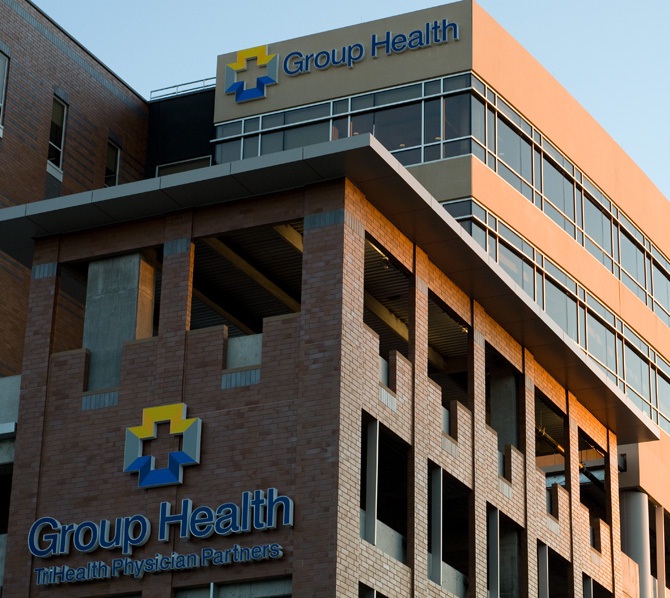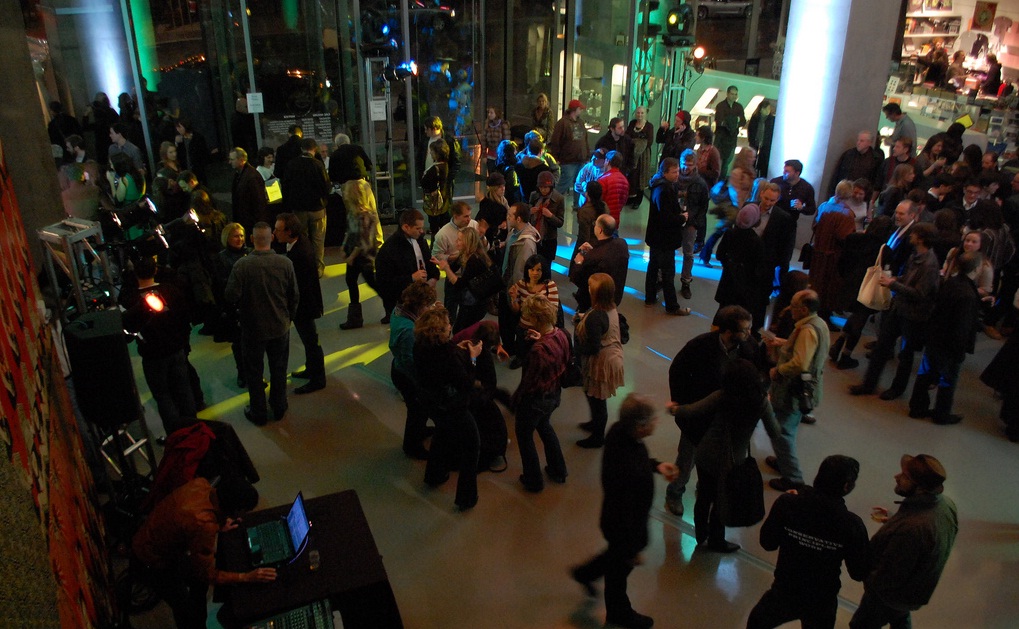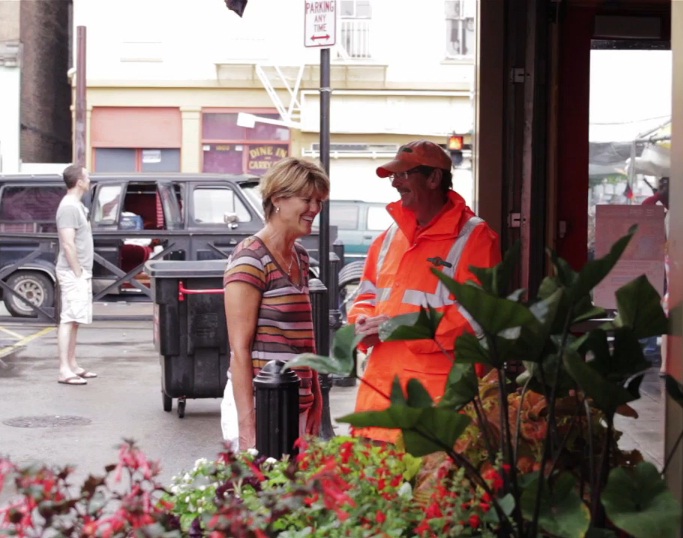Group Health Associates is celebrating the opening of their new $27 million medical office building in Clifton today. The eight-story tower is connected to Good Samaritan Hospital at Clifton Avenue and Dixmyth Avenue. The existing building, located approximately a half-mile down the street at the corner of Martin Luther King Jr. Drive and Clifton Avenue, is scheduled to be imploded this September.
Both Group Health Associates and Good Samaritan Hospital are divisions of TriHealth, and TriHealth President and CEO, John Prout, reiterated the company’s’ commitment to servicing the urban core and contributing to Uptown’s vibrancy.
“This investment is part of TriHealth’s ongoing commitment to Uptown as a vibrant community, business center, education center, and medical hub for the region,” Prout told UrbanCincy. “And I add my thanks to all the private and public partners who helped make this a reality.”

Group Health’s new Clifton facility sits next to Good Samaritan Hospital along Dixmyth Avenue. Photograph by Jake Mecklenborg for UrbanCincy.
The 67,000-square-foot facility had been under construction since early 2011, and is considered to be state of the art. Individuals passing on the street will notice that the medical tower sits atop a five-story parking garage, but individuals using the facility will reportedly experience better access to physician specialists, a full service pharmacy and more integrated services as a result of being located on the Good Samaritan campus.
According to Group Health officials, the medical group will also begin offering neurology as a specialty and plans to add ten more physicians to round out the facilities services in September.
Construction of the new medical facility was made possible by low-cost financing from the Uptown Consortium through its Uptown Partners’ Loan Pool.
The land, however, was not readily available until the $4 million realignment of Dixmyth Avenue in 2006. Previously, the street had been located further south, with homes along its northern side. The street’s realignment made Good Samaritan Hospital’s recent expansion possible, along with the construction of the new Group Health facility.
The controversial road realignment eventually took 28 residential properties through the use of eminent domain, and was upheld in court against one hold out, Emma Dimasi. The project was seen as controversial at the time because while city officials claimed the realignment was for safety purposes, others speculated that it was to free up additional land next to the then constrained Good Samaritan Hospital site.
Just one year after the realignment of Dixmyth Avenue, in 2007, Good Samaritan commenced construction on a ten-story patient care tower.
Health care professionals say that the rapid expansion of health facilities is a response to the growing demand placed on the region’s health care system by an aging population. The issue of aging and expanding health care has been the subject of numerous studies highlighting this trend on the national and global scale. Regionally, it has justified the expansion of the hospitals in Uptown’s “Pill Hill”, including expansions at Cincinnati Children’s Medical Center and University Hospital in Corryville, and Christ Hospital in Mount Auburn.
The expanding local hospital system is offering improvements in health care services for the region’s aging population, and creating thousands of new high-paying jobs. At the same time, however, it is coming at the expense of historic neighborhoods and entire blocks of residential housing.
Such a tradeoff might be good for city coffers, but it will certainly do nothing to directly help Cincinnati’s ongoing struggle with population loss.



